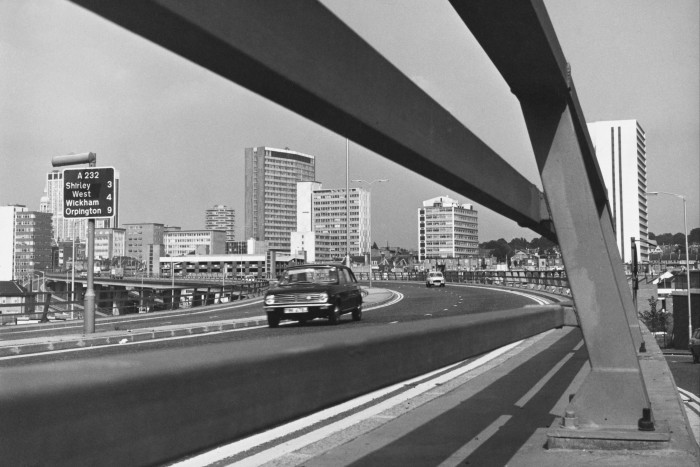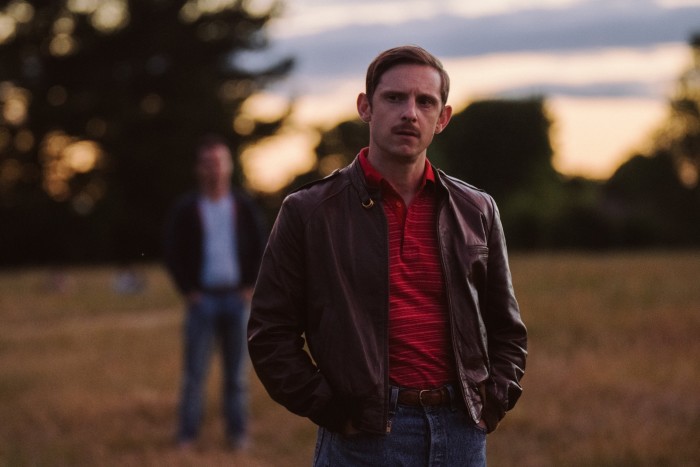Stay informed with free updates
Simply sign up to the Life & Arts myFT Digest — delivered directly to your inbox.
Croydon was never cool. But growing up there I didn’t realise the extent of its sad-sack reputation until I crossed its boundary line. Peers would sneer about the postcode and nod sympathetically when I revealed my home address. Quite why Croydon became the symbol of all that is awful was never clear, but it seemed to have claimed an outsize grip on the public’s imagination as being the definition of suburban hell.
I thought my hometown was pretty boring, but I was always bemused by the Croydon hate. Maybe its postwar aspirations to rebuild itself as “mini Manhattan” were too pretentious? Maybe the town was too ebullient? Too concrete?
No question, Croydon was ugly and carved up with major roads. It was also a cultural vacuum: its only major venues were the Blue Orchid nightclub and the Fairfield Halls, a somewhat tragic edifice of 1960s architecture best known for staging Christmas pantos, lunchtime concerts and hosting touring performances by the likes of Manfred Mann. A trip to the Whitgift shopping centre, another relic of late 1960s Modernism, was the highlight of the week. Benetton was our mecca — followed later by the arrival of PizzaExpress.

There was little point in defending Croydon: its suburban smallness was too well ingrained. We were tennis clubs and “good schools” and weird ancient covenants that meant, in our parish, there were no pubs. The late singer Kirsty MacColl, who grew up there, hoped it would “blow up”. David Bowie, who grew up in nearby Bromley, told reporters in 1999: “It was my nemesis, I hated Croydon with a real vengeance. It represented everything I didn’t want in my life.” We even had a sitcom dedicated to our dull middlingness — the ghastly Terry and June.
It’s a wonderful irony then to discover that the place so derided for being dull and ugly should house more people dedicated to prettifying the world than anywhere else in the UK. Research undertaken by Oxford Economics last week revealed that one in 32 people in the south London “mini city” work in the beauty industry. The figure is more than four times the national average, which is one in every 150 across the rest of the UK: 6,200 people in Croydon work as hair stylists, salon workers, beauticians or for the beauty and healthcare company Superdrug.
Yes, the place that gave us the “Croydon facelift” (a sky-high ponytail that scrapes one’s face into a smooth visage) is actually most likely to house the stylist who cuts your fringe. From the “concrete hell” of Croydon (another Bowie slander) has emerged triumphant a tribe of beauty queens.
It shouldn’t be surprising — the beauty industry is an important driver of social mobility. Becoming a hair stylist or beautician offers a career path for enterprising youngsters who don’t have the academic qualifications to follow other higher-learning routes. Croydon ranks among the most deprived areas of the country and is one of the most culturally diverse populations in the UK. A career in beauty is inclusive, doesn’t require A-levels, and boasts some of the higher job satisfaction rates.
Speaking to the Telegraph about Croydon, the hair stylist James Brown observed: “What other job can a boy from an estate in Croydon [do and] end up travelling the world cutting the hair of Hollywood stars?”
I’m also curious to know if the wealth of beauty practitioners can be traced back to Kate Moss? Starved for figures one could look to for inspiration, might the model’s success in fashion (and, by association, beauty) have inspired others to follow in her path? If every city has a leader, then Kate Moss has been ours, the Pied Piper with a blow dry who has led us out of our suburban mire.
For years, Moss was the only cool thing that had ever come from Croydon (unless you count Sue Perkins or Philip Green). Now of course it has the Brit School, the arts fulcrum which produced Amy Winehouse, Tom Holland and this months’s Vogue cover girl FKA Twigs.

I have stopped waiting for the long-promised renaissance during which Croydon will vanquish the stigma of its past. But perhaps that renaissance is finally upon us, Croydon is even becoming “art-house” now. Filmmaker Andrew Haigh’s award-winning All of Us Strangers finds its central character returning to his childhood home in Sanderstead: the film was shot at Haigh’s former home in south Croydon which, after some judicious Google mapping, I realised was about three streets from my own childhood house.
Rather than wallow in the awfulness of Croydon, Haigh’s film is an ode to life on the further outposts of Zone 6: there’s no concrete, his Croydon is a world of leafy gardens, and front porches and golf clubs whose fringes tip on to the sunlit Downs. It’s beautiful, and nostalgic and unexpectedly quite chic. Watching it ignited sense memories of a place I have for too long tried to crush.
It’s one of the first times I’ve ever seen my former postcode described with fondness, a place to be celebrated rather than shamed. So cheers to that concrete hell of popular mythology and its clever beauty queens.
Email Jo at jo.ellison@ft.com
Find out about our latest stories first — follow FT Weekend on Instagram and X, and subscribe to our podcast Life & Art wherever you listen











